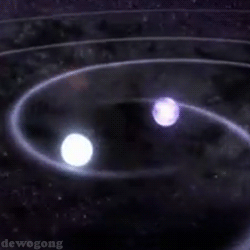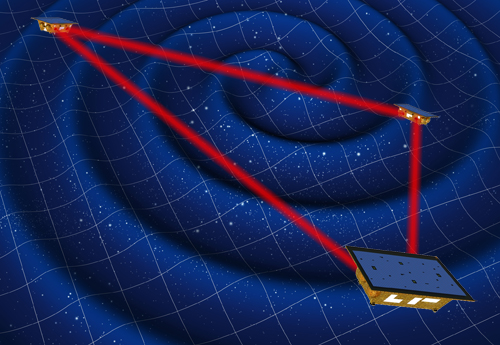LISA gets whistled at by some of the dense guys
Professor Thomas Tauris has been calculating how that might sound, and this is reported in a recent paper titeled "Disentangling Coalescing Neutron Star–White Dwarf Binaries for LISA" in Physical Review Letters.

Gravity waves are hot in astrophysics right now. Finally we can measure them, and this has revolutionized the ways and possibilities of studying physics under extreme conditions. These waves are produced e.g. when compact stars like black holes, neutron stars or white dwarfs coalesce and create a slosh in the structure of the Universe. In some respect gravity waves can be compared to sound waves, and the 'sound' of two dense celestial objects colliding will resemble a chirp - a whistle that at the end increases in tone and intensity. The 'shape' of the chirp tells a lot about the compact objects creating the waves, and this is what Thomas Tauris has been calculating.
Two white dwarves dancing tight spread waves in the Universe. Image: NASA
The main subject of the paper is close binary stars where a white dwarf coalescs with a neutron star or with another white dwarf. From the theoretical calculations it seems to be possible to distinguish between the various objects and also to more precisely determine some of their parameters. Physical measurements of this is not yet possible, though. This type of collisions will only cause very weak gravity signals, and with the present state of gravity wave telescopes we have no hope of detecting them. But soon we will!
A possible configuration for LISA. Image:ESA
The LISA (Laser Interferometry Space Antenna) satellites are planned to do just this. LISA is a configuration of three similar satellites orbiting the Sun in tracks that are quite similar to that of the Earth. They all have lasers making it possible constantly and very precisely to measure the individual distances of some 2.5 million kilometers, making it possible to see if the local spacetime for a short moment oscillates due to the passing of a gravity wave. Thomas Tauris is well in advance of matters. According to present plans LISA will be launched by the European Space Agency ESA in 2034, but this gives the theoreticians enough time to found a solid basis, with lots of exiting results to look forward to!
The paper in Physical Review Letters can be found here.
Thomas Tauris has been selected as Senior Fellow at AIAS (Aarhus Institute of Advanced Studies) from 1 February 2019.


